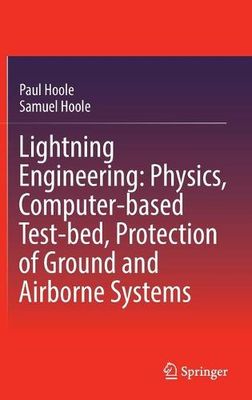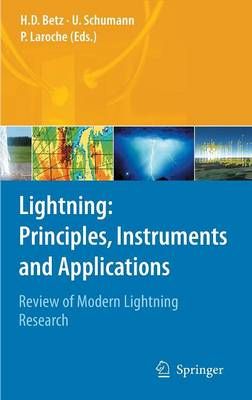Lightning: Principles, Instruments and Applications
Overview
- Understanding of lightning phenomena
- Experimental observations and theoretical explanations of lightning
- Importance of lightning in meteorology and atmospheric science
- The reader gets a comprehensive view about lightning effects, even on very complex topics which are not yet fully understood and remain subject to further research
About this book
Lightning represents a natural phenomenon of substantial interest. Due to its complex nature, research continues in many countries and reveals amazing results. Lightning is actively observed because of its relevance to Earth climate and air composition in addition to the classical aspects of related human fatalities and damage to forests, buildings, power lines, aircraft, structures and electronic devices.
In this volume, the most important contemporary questions on lightning are addressed and analyzed under many experimental and theoretical aspects. Lightning detection techniques using ground-based and space-borne methods are described, along with network engineering and statistical analysis.
Contributions detail research on atmospheric electricity, cloud physics, lightning physics, modeling of electrical storms and middle atmospheric events. Special phenomena such as triggered lightning and sprite observations are examined. Lightning-induced nitrogen oxides and their effects on atmospheric chemistry and climate are discussed.
Each topic is presented by international experts in the field. Topics include:
| * air chemistry
* convective storms * infrasound from lightning * lightning and climate change * lightning and precipitation * lightning and radiation * lightning and supercells * lightning and thunderstorms |
* lightning detection * lightning from space * lighting protection * lightning return strokes * observations and interpretations * spatial distribution and frequency * triggered lightning * weather extremes |
Table of contents
(27 chapters)
|
|
|
About the Editors
Hans D. Betz received his PhD in Physics at the University of Heidelberg, Germany. He performed research and teaching at the Physics Department of MIT at Boston, USA, thereafter at the Physics Department of the Ludwig Maximilians University, Munich. Major fields of research covered laser, atomic and nuclear physics, and atmospheric electricity.
Ulrich Schumann is a prominent German atmospheric scientist and researcher, known for his work in the field of atmospheric physics and chemistry. His research has primarily focused on topics like climate change, atmospheric chemistry, and the interactions between aerosols, clouds, and radiation in Earth's atmosphere.
Pierre Laroche is indeed an expert in the field of lightning research, and he is known for his contributions to the study of lightning, particularly in the context of understanding its physics and the instruments used to study it. Laroche played a significant role in curating the content of the book, gathering expert insights, and making complex lightning science accessible to a broad audience.


